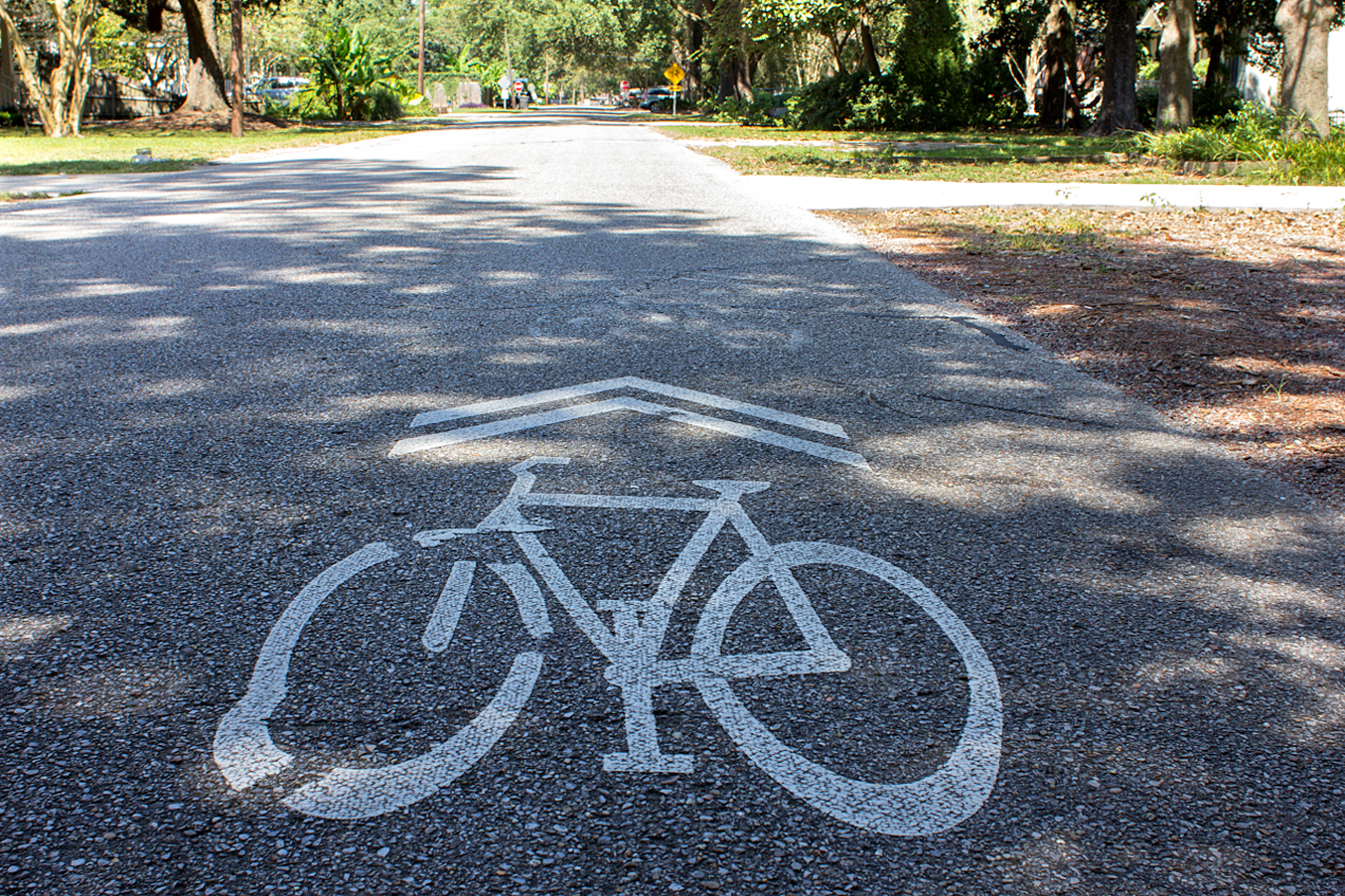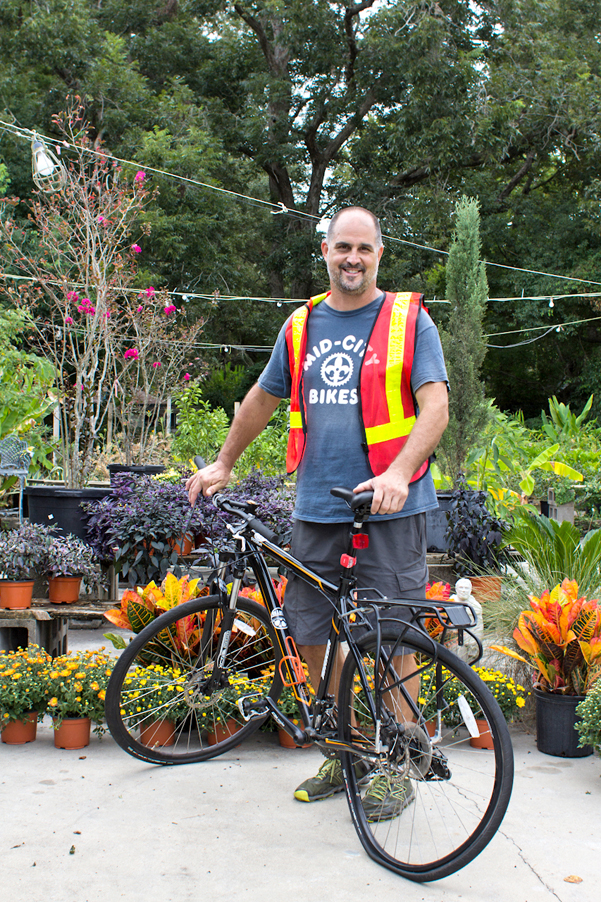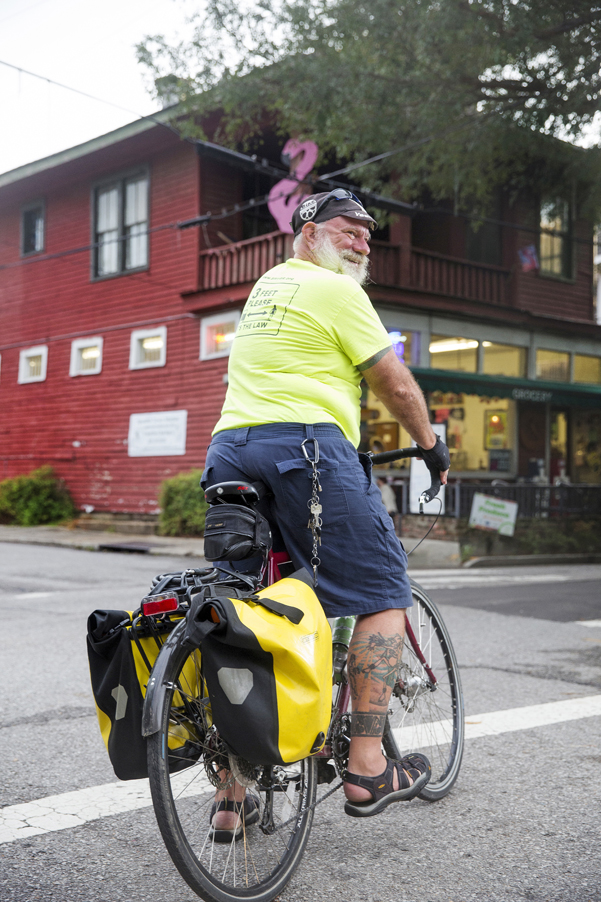
Bikelash in Baton Rouge
The alternative transportation culture is growing in Baton Rouge. But with it, there’s mounting tension.
In a relatively short period of time, car-centric Baton Rouge has seen real signs of progress toward establishing an alternative transportation culture.
Bike lanes or paths have been built in pockets throughout East Baton Rouge Parish, and more are slated for construction, including an extension of the Mississippi River Levee bike path south from Farr Park to Ben Hur Lane and the Wards Creek Trail connecting Bluebonnet Boulevard to Siegen Lane.
The parish’s FuturEBR plan calls for Government Street to be reduced from four lanes to three in certain sections to calm traffic and allow cycling lanes, and a design firm is currently finalizing details.
|
|
A statewide coalition of biking organizations has formed and is holding a summit in Baton Rouge early this month. And a recent Environmental Protection Agency grant is helping the city study a possible public bike share program.
But while all of these changes invite more biking in the region, the cycling infrastructure—and public education about how bikers and motorists should interact—hasn’t caught up. Controversy in one Mid City neighborhood over who gets to use bike lanes, along with several high-profile accidents, suggest the Capital City has a long way to go before it accepts its urban identity.
Some say it’s a normal juncture for cities in the midst of this kind of change.

“I’m part of the Baton Rouge learning curve,” says Gordon Mese, owner of the Garden District Nursery in Mid City.
On the evening of Aug. 5, Mese was cycling in the bike lane on Capital Heights Avenue with his girlfriend, Julie Morgan, when a motorist driving north on Blanchard Street ran a stop sign and struck him. Ironically, Mese and Morgan were returning from a memorial bike ride for a cyclist who was hit and killed by a vehicle on Goodwood Boulevard a few days earlier. Mese and Morgan were both wearing reflective vests. Mese suffered three fractures in his hip and was still limping nearly two months after the accident. The driver was cited for failure to yield and issued a ticket.
“He did a lot more than that,” Mese says. “He was definitely distracted.”
Mese, a landscape architect who pushed better urban planning as his main campaign plank when he ran for mayor-president in 2012, says Baton Rouge has made strides but is behind many of its peers.
“The rest of the world is way far ahead of us on this,” he says. “Most of the country is ahead of us.”
A combination of factors have led to more bike-riding throughout the country, such as fluctuating gas prices and more people moving to the urban core of cities. According to a 2014 League of American Bicyclists study, the U.S. saw a 62% increase in bicycle commuting from 2000 to 2014. The same study charted the increase by state between 2005 and 2014 and found that bike commuting in Louisiana jumped 80%. Many cities have been adding bike lanes and other alternative transportation infrastructure to accommodate the growing trend.
But with more bikes and cars sharing the road, the possibility of more accidents increases, especially if the infrastructure doesn’t meet demand.
In August, the Centers for Disease Control and Prevention released the results of a 1975-2012 study that found that the rate of cycling deaths collectively dropped during that period in the United States.
Still, certain states continue to struggle with the issue. Louisiana had the third-highest rate of cycling fatalities in the country when the study concluded in 2012. In East Baton Rouge Parish that year, there were five cycling fatalities and 57 injuries, according to data from the Highway Safety Research Group (HSRG) at LSU. There were no deaths in 2013 or 2014. Thus far in 2015, there have been two deaths and 57 injuries, according to HSRG.
Whether a lack of proper infrastructure contributes to the frequency of accidents is unclear, but most agree a contributing factor is confusion about how to share the road. The Capital Region Planning Commission, or CRPC, announced in September a new campaign that encourages cyclists and motorists to follow safety guidelines, which include giving bikers three feet of clearance when passing them on a shared road.
CRPC is distributing ’70s-style “Share the Road, Travel Happy” yard signs and door hangers throughout areas where there are high concentrations of bikers, especially Mid City and downtown Baton Rouge.
It is the second such project for CRPC, which launched a campaign last fall encouraging bikers to use lights when riding at night.
CRPC transportation alternatives coordinator J.T. Sukits says that until Baton Rouge’s cycling infrastructure catches up to demand, safety is crucial.
“There is a lot of fatigue on this issue right now, and a lot of conflict on both sides,” Sukits says. “There are many projects that are coming on line, but in between, people need to be respectful. It’s not one or the other. It’s everybody.”
One of the biggest current misconceptions is that cyclists should cede the majority of the lane to cars and stay to the periphery, allowing cars to pass. In fact, Sukits says, cyclists are allowed the full use of a lane, just like a motor vehicle. By the same token, bikes should follow the same traffic rules as cars, including stopping for red lights and stop signs, and signaling prior to turning.
“Not all motorists are bad,” Sukits says, “and not all cyclists are right.”

Safety, along with infrastructure, public policy and bike law issues, will be part of the discussion at the second annual statewide Bike Summit, held Nov. 2 at the East Baton Rouge Parish Library and coordinated by the recently formed Bike Walk Louisiana. The organization includes bike advocacy groups from around the state, and it seeks to increase safety and promote multi-modal transportation, says spokesman Mark Martin, president of Bike Baton Rouge.
Martin, who hasn’t owned a car in 25 years, says he’s encouraged by the progress made in the Capital City, and he agrees that the early stages of change can introduce more safety concerns.
“It’s much improved, but it still has a long way to go,” he says. “This is a normal process. When you have a dominant culture, and it seems like it is being questioned, there is going to be discontentment.”
One of the biggest challenges in Baton Rouge, Martin says, is the lack of connectivity between cycling facilities. Cyclists might be able to ride in lanes or on paths temporarily, but routes of any distance also include roadways unsafe for bikers and pedestrians.
A recent issue in Webb Park demonstrated that expanding the cycling infrastructure isn’t always about constructing new facilities. Sometimes it’s about enforcement and education. Bike lanes that were installed nine years ago on Glenmore and Hundred Oaks avenues were being used habitually by some homeowners for parking.
After cyclists complained, the Baton Rouge Police Department began issuing tickets, setting off a debate with heated neighborhood meetings.
Subsequent meetings were being scheduled at press time to find a compromise between bike lane users and homeowners.
Ironically, Webb Park, along with Capital Heights, Bernard Terrace and Valley Park, had just completed the Street Smart Plan for Neighborhood Connectivity, a plan facilitated by the Center for Planning Excellence and intended to ease traffic and increase opportunities for alternative transportation.
Despite his accident, Mese believes Baton Rouge shouldn’t recoil from continuing to build an alternative transportation network and encouraging residents to use it.
“We’ve got a lot of big projects in the mix, and we don’t need to be stepping back from them,” he says. “When a community is at the tipping point like we are, there is what they call ‘bikelash.’”
Rules of the road:
• Where there are no bike lanes, cyclists have the right to the full use of a street lane.
• Bikes are expected to follow the same traffic laws as cars, including stopping at red lights and stop signs and signaling before turning.
• Cars must give bikes at least three feet of clearance when passing.
• Cyclists should not ride on sidewalks.
• Cyclists should ride with traffic, and use the rightmost lane.
• The League of American Bicyclists advises cyclists to wear helmets and check their tires, brakes and chains before heading out. Reflectors on the bike and apparel are encouraged at night.

Street Smart:
In August, residents of Webb Park, Capital Heights, Bernard Terrace and Valley Park completed the “Street Smart Plan for Neighborhood Connectivity,” facilitated by the Center for Planning Excellence, to ease traffic and increase opportunities for alternative transportation. That included creating “a bike network that connects places inside and outside the neighborhood.”
While recent controversy over existing bike lanes in those neighborhoods has put that plan in a holding pattern, it calls for installing new bike lanes, some with buffers between the bike lane and the street, on:
• Country Club Drive
• Steele Boulevard
• West Drive
• Westmoreland Drive
• Broussard Street
• Edison Street}
• Nairn Drive/Valley Street
• Woodside Drive
|
|
|
